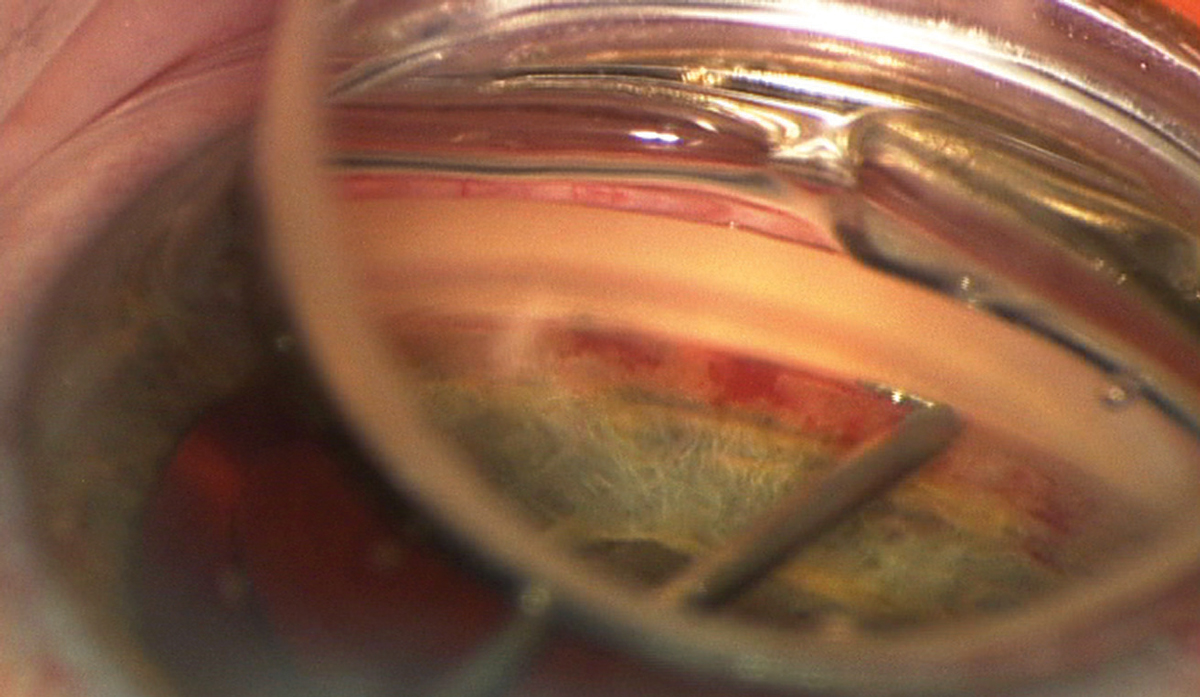 |
| This study found that combining trabecular micro-bypass and goniotomy procedures may result in better IOP outcomes. Photo: Joseph W. Sowka, OD. Click image to enlarge. |
In an effort to compare the adjunctive effect of combined procedures, researchers recently found that trabecular micro-bypass and goniotomy, when added to cataract surgery, resulted in a large decrease in IOP spikes, a modest effect on IOP and a minimal effect on medication burden when compared with cataract surgery alone in glaucoma patients.
The study included 138 eyes diagnosed with open-angle glaucoma: 84 eyes with cataract surgery alone, 25 eyes with cataract/trabecular surgery and 29 eyes with cataract/goniotomy surgery. The team compared the groups for postoperative IOP and number of ocular hypotensive medications. They defined an IOP spike as IOP ≥21mm Hg and 10mm Hg greater than the preoperative period on postoperative day one.
All three surgeries showed a decrease in IOP and medication burden at three and six months postoperatively when compared with preoperative baseline. When compared with cataract surgery alone, cataract/trabecular and cataract/goniotomy had similar IOP-lowering at one month postoperatively and variable results at three and six months. The change in ocular hypotensive medications was not statistically different between the surgical groups at any postoperative visit. Cataract/trabecular and cataract/goniotomy decreased IOP on postoperative day one and had a relative risk reduction of approximately 70% for IOP spikes.
McNiel CL, Sanchez FG, Rees JP, et al. Intraocular pressure and medication burden with cataract surgery alone, or cataract surgery combined with trabecular bypass or goniotomy. J Glaucoma. March 29, 2022. [Epub ahead of print]. |

